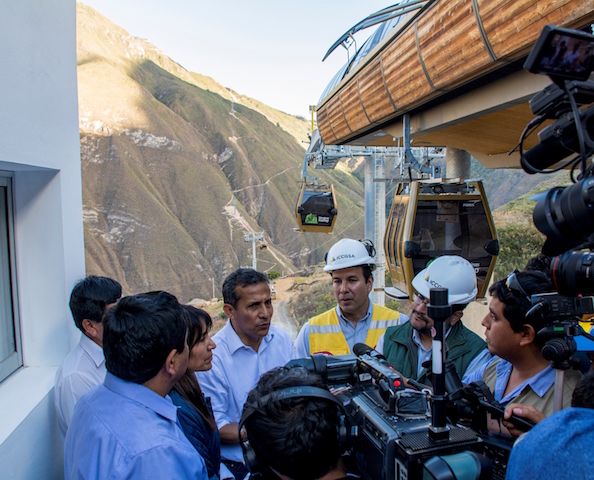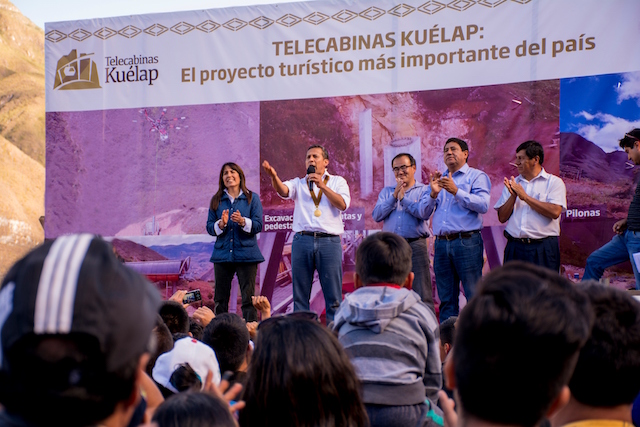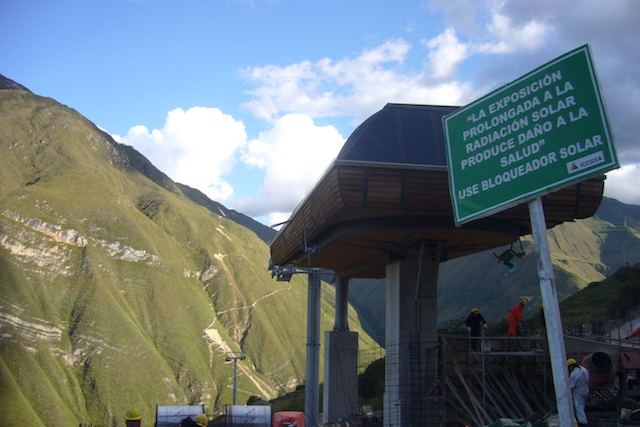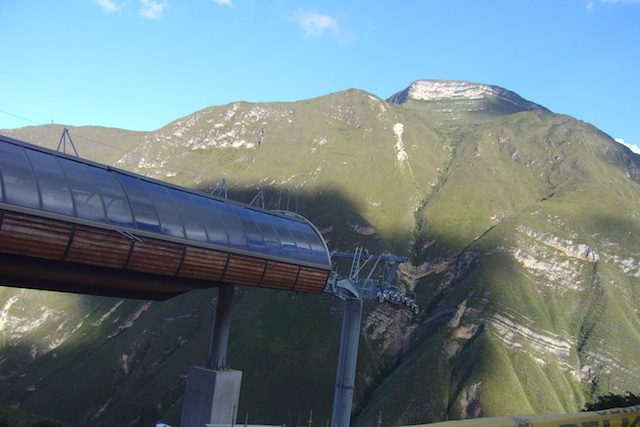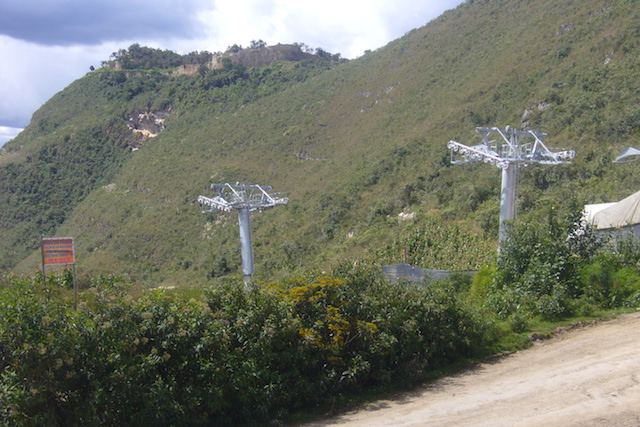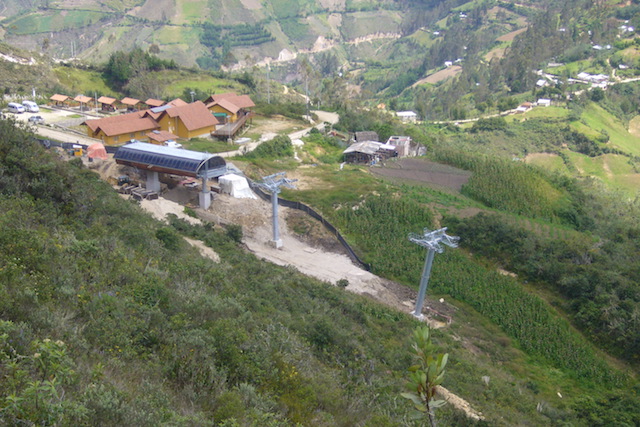Update on high-level engineering project by Peruvian-French consortium.
$US 21 million project set to increase visitors from 40 to 100 thousand per year.
reduces journey time to Kuelap from two hours to 20 minutes.
STOP PRESS: as of March 2017, cable car now in operation.
On 20th July 2016, just a few days before leaving office, the outgoing President of Peru, Ollanta Humala paid a visit to the town of Nuevo Tingo to inspect the progress of the cable car system to Kuelap.
It had been hoped that the system would be operational at this point, but delays in the construction mean the inauguration has been postponed until the end of the year.
Nevertheless, this cable car is one of the most important tourism projects in the country, offering an additional mode of access for visitors to the archaeological site.
The four kilometre (2.5 mile) route, that goes from 2,000 m (6,562 ft) to 3,000 m (9,843 ft) above sea level, is covered in 20 minutes.
The views on the way are spectacular, adding a significant value to the Kuelap visit experience. And with the cost of a ticket initially set at around $6, it is within the economic reach of Peruvians, as well as overseas visitors.
There are 26 gondolas, with room for eight passengers each. Overall, the system has the capacity to take 1,000 passengers per hour.
Luckily, the Kuelap site is large enough to accommodate these projected numbers ... although it will undoubtedly be several years before the cable car is running at full capacity.
The Muster Station is located in Tingo, a 40-minute drive from Chachapoyas. Here, visitors leave their transport in the car park, and then take an official bus to the cable car embarkation point, which is 3 km (1.9 miles) further uphill.
Prior to boarding the bus, visitors are able to make use of a waiting room, cafeteria, shops and an exhibition room, while enjoying great views over the Tingo and Utcubamba rivers. Here is also the location of the administrative offices.
The project has been a major engineering challenge. The cable cars are carried on a system of 23 pylons, made of galvanized steel set in concrete bases, distributed over the 4 km (2.5 mile) route, on both sides of the Tingo River valley.
Owing to the extreme geography of the area, the constructors had to use a helicopter to move some of the necessary materials.
A helicopter was also needed to put the pylons, weighing up to 6 tonnes, into place. But these flights were sometimes hampered by the weather conditions of the Amazonas region.
The work has been undertaken by a French-Peruvian consortium, Telecabina Kuelap SA. The French company, POMA, has provided the cable car engineering expertise, having installed 300 cable car systems worldwide since 1996; while the Peruvian construction firm, ICCGSA, has brought their local experience in large-scale building projects.
Specialists from Spain, Colombia, USA, and Ecuador, as well as French and Peruvian, have worked alongside as many as 320 local workers.
PeruNorth offers this incredible aerial journey as part of all Chachapoyas itineraries. For more information, just get in touch.



